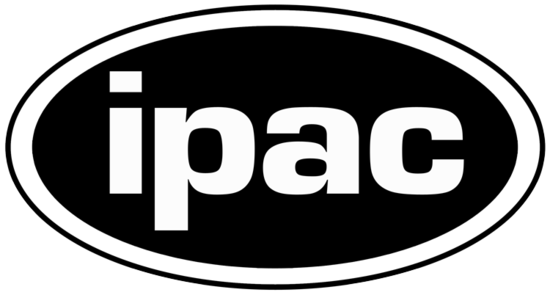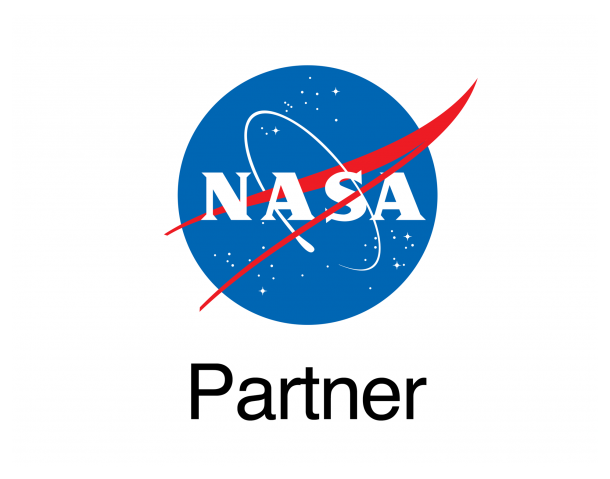First Image of a Black Hole

nrao_eso1907a April 10th, 2019
Credit: EHT Collaboration
The Event Horizon Telescope (EHT) a planet-scale array of eight ground-based radio telescopes forged through international collaboration was designed to capture images of a black hole. In coordinated press conferences across the globe, EHT researchers revealed that they succeeded, unveiling the first direct visual evidence of a supermassive black hole and its shadow. The shadow of a black hole seen here is the closest we can come to an image of the black hole itself, a completely dark object from which light cannot escape. The black holes boundary the event horizon from which the EHT takes its name is around 2.5 times smaller than the shadow it casts and measures just under 40 billion km across. While this may sound large, this ring is only about 40 microarcseconds across equivalent to measuring the length of a credit card on the surface of the Moon. Although the telescopes making up the EHT are not physically connected, they are able to synchronize their recorded data with atomic clocks hydrogen masers which precisely time their observations. These observations were collected at a wavelength of 1.3 mm during a 2017 global campaign. Each telescope of the EHT produced enormous amounts of data roughly 350 terabytes per day which was stored on high-performance helium-filled hard drives. These data were flown to highly specialised supercomputers known as correlators at the Max Planck Institute for Radio Astronomy and MIT Haystack Observatory to be combined. They were then painstakingly converted into an image using novel computational tools developed by the collaboration.
Provider: National Radio Astronomy Observatory
Image Source: https://public.nrao.edu/gallery/astronomers-capture-first-image-of-a-black-hole/
Curator: European Southern Observatory, Garching bei München, None, Germany
Image Use Policy: Creative Commons Attribution 4.0 International License

- ID
- eso1907a
- Subject Category
- C.5.4.6
- Subject Name
- Messier 87
- Credits
- EHT Collaboration
- Release Date
- 2019-04-10T15:07:00
- Lightyears
- Redshift
- Reference Url
- https://public.nrao.edu/gallery/astronomers-capture-first-image-of-a-black-hole/
- Type
- Observation
- Image Quality
- Distance Notes
- Facility
- Event Horizon Telescope
- Instrument
- None
- Color Assignment
- Orange
- Band
- Millimeter
- Bandpass
- None
- Central Wavelength
- 1200000
- Start Time
- Integration Time
- Dataset ID
- None
- Notes
- Coordinate Frame
- ICRS
- Equinox
- J2000
- Reference Value
- 187.70593075, 12.39112325
- Reference Dimension
- 7416.0, 4320.0
- Reference Pixel
- 3738.9937831, 3032.00448074
- Scale
- -5.91663506907e-14, 5.91663506907e-14
- Rotation
- 0
- Coordinate System Projection:
- TAN
- Quality
- Full
- FITS Header
- Notes
- NAXIS1 = 7416 NAXIS2 = 4320 CRPIX1 = 3738.9937830984204 CRPIX2 = 3032.0044807400263 EQUINOX = 2000.0 CRVAL1 = 187.70593075 CRVAL2 = 12.39112325 CTYPE1 = RA---TAN CTYPE2 = DEC--TAN RADECSYS= ICRS CD1_1 = 1.0476277673366738E-11 CD1_2 = 5.916635069070311E-14 CD2_1 = -5.916635069070311E-14 CD2_2 = 1.0476277673366738E-11
- Creator (Curator)
- European Southern Observatory
- URL
- https://www.eso.org
- Name
- Telephone
- Address
- Karl-Schwarzschild-Strasse 2
- City
- Garching bei München
- State/Province
- None
- Postal Code
- D-85748
- Country
- Germany
- Rights
- Creative Commons Attribution 4.0 International License
- Publisher
- European Southern Observatory
- Publisher ID
- nrao
- Resource ID
- eso1907a
- Resource URL
- http://www.eso.org/public/archives/images/original/eso1907a.tif
- Related Resources
- Metadata Date
- 2019-04-08T14:00:38.128143
- Metadata Version
- 1.1
Detailed color mapping information coming soon...









